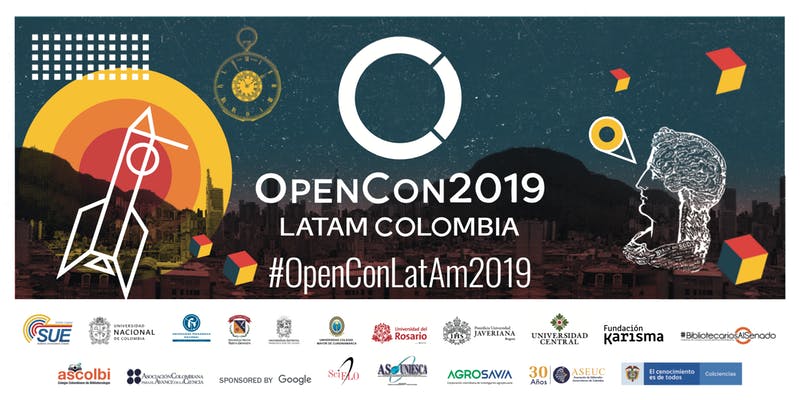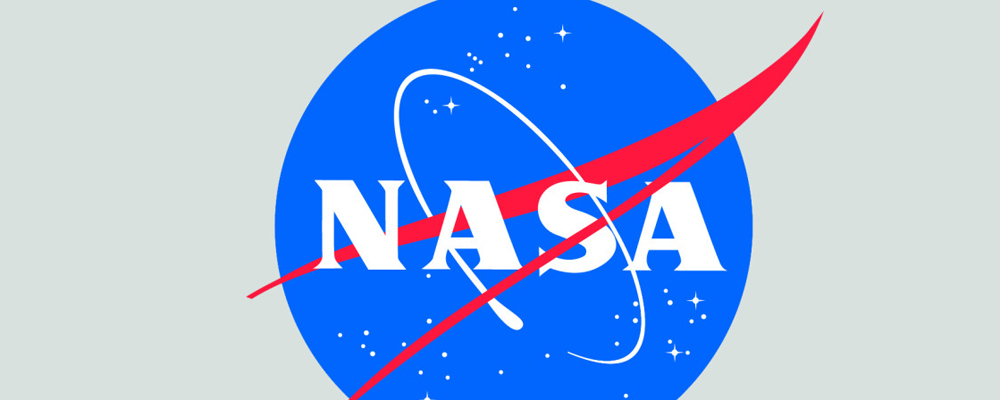
OpenCon LatAm 2019
The OpenCon is an international open access conference especially aimed for students and young researchers. This year’s edition will take place in the Universidad Nacional de Colombia and the Pontificia Universidad Javeriana, both located in Bogotá, Colombia.
Dates: 26 – 28 Sept 2019
—–IN SPANISH—-
OpenCon es la conferencia internacional sobre acceso abierto al conocimiento científico y académico, educación abierta y datos abiertos, dirigida especialmente a estudiantes y a quienes están en sus primeros años de carrera profesional académica. Es una contribución a formar los líderes del futuro en estos temas.
OpenCon es organizada por Right to Research Coalition, SPARC (The Scholarly Publishing and Academic Resources Coalition) y un Comité integrado por estudiantes y profesionales académicos jóvenes, de diversas partes del mundo. En las ediciones de 2014 y 2016 la conferencia se llevó a cabo en Washington D.C., en 2015 en Bruselas, en 2017 en Berlín y en 2018 en Toronto.
Además, OpenCon apoya la realización de eventos satélite organizados por los propios participantes. Los eventos satélite han tenido lugar en 25 países y en ellos se discuten contenidos de educación, acceso y datos abiertos a nivel global, así como presentaciones locales. En la reciente OpenCon de Toronto 2018, los participantes de la región latinoamericana que participaron en la desconferencia eligieron a Colombia para realizar OpenCon LatAm 2019, debido a que se ha identificado en el país una comunidad activa, con actores relevantes, que impulsan y promueven los ecosistemas abiertos y elementos de la ciencia abierta.
Source: https://conferencias.unimilitar.edu.co/index.php/opencon/2019

Simba report has revealed that Open Access book publishing has a bright future and its market share is growing steadily. According to the report released by Simba, industry analysis and forecast company, through the year 2016 – 2020 Open Access book publishing will see an annual revenue growth of 30%.
So far scientific, technical and medical (STM) fields play major role in terms of publishing Open Access books. Currently, the revenue that Open Access books generate is a small fraction of what non-open access books produce. Open Access books also represent few titles per thousand published scholarly and academic books every year. However, Open Access books have taken hold in the humanities and social sciences. Besides, it is growing in countries outside the leading global scholarly publishing, Simba report shows.
Publishing Open Access book is very costly endeavor when compared to publishing journals articles. Article Processing Charge (APC), the model widely used for publishing journals articles, is less suitable for Open Access book publishing. So far university presses used various models to publish open access books. Institutional, crowd sourcing and non-traditional library budgets are the most widely used sources of funding to publish Open Access books.
According to the DOAB, November 2016 compilation, there are 5,468 Open Access books (free to read and free to share) from 164 publishers. The leading Open Access Books publishers include De Gruyter, Knowledge Unlatched, Springer Nature, Brill, SciELO, Frontiers Media, InTechOpen and Bookboon. The number of Open Access books and publishers joining the industry are expected to increase.
As indicated above, so far few Open Access books are published per year. Nonetheless, increasing number of titles per year and coupled with high Open Access books publishing cost might bring enormous challenges to the sustainability of these models. Source

ELife open-access journal to start charging fees
By Declan Butler| The open-access journal eLife is dropping one of its most distinctive features: free publishing. From 2017, it will charge a fee of $2,500 for all accepted papers.
Most open-access journals already charge for publishing, because they have few other ways to bring in cash. But eLife, which launched in 2012, has until now had its expenses covered by grants from three of the world’s largest private research funders: the Howard Hughes Medical Institute in Chevy Chase, Maryland; the Wellcome Trust in London; and the Max Planck Society in Berlin.
These backers want to create an elite online journal that can compete for authors’ best papers against leading subscription publications (such as Nature, Science and Cell), yet still be open access. The three funders set up the non-profit eLife organization, and have committed to provide it with £43 million ($56 million) over 10 years.
The journal now needs another revenue stream to put its publishing business on a more sustainable footing as the number of papers that it receives increases, says its executive director Mark Patterson, in Cambridge, UK. ButeLife will still rely heavily on its grants, he says. By charging some fees, eLife will be able to scale up its publishing operations and free up grant money to develop open-source tools for the research community. “Publishing science is a core activity, but it’s not all that we do,” he says.
The journal’s decision to start charging might mean that it loses some prospective authors, notes Kent Anderson, the former publisher of Science and now chief executive of the analytics firm RedLink in Westborough, Massachusetts. But Nick Golding, an epidemiologist at the University of Melbourne in Australia, says the new charge won’t put him off submitting manuscripts to eLife, which has published five of his articles since 2014. “Of all the journals I’ve published with, eLife has impressed me the most. It’s often difficult to find open access fees, but eLife is one journal I’d be very happy to pay for,” he says.
Pick a fee, any fee
Open-access journals charge a wide variety of fees — a range that has sparked fierce debate over how much scientists should or could pay to publish a scientific paper. Highly selective open-access journals that reject most of their submitted papers tend to have higher operating expenses, and eLife, which last year accepted 15.4% of submissions, falls into that category.
The decision to ask for $2,500 puts eLife in the range typically charged by other open-access journals, Patterson says, such as those published by the Public Library of Science. And it is lower than those charged by competitors such as Science Advances ($4,600) andNature Communications ($5,200).
Unusually for scientific publishers, eLife is transparent about its publishing costs and has posteddetailed accounts of how it arrived at its fee. The charge does not cover all of eLife’s expenses; rather, it will cover ‘marginal costs’ — those that increase with each new paper the journal receives. These include salaries for scientific editors and staff who handle papers, payments for the third-party systems that process articles, and fee waivers for authors who lack sufficient funding to pay.
The journal will still depend on its backers to pay what it terms fixed costs, such as for technology platforms, infrastructure, marketing and other staff. The total publishing cost per article in 2017,eLife estimates, will be around £3,085.
That estimate deliberately excludes a large chunk of the organization’s expenses — around 22% last year — that go to what eLife calls “technology and innovation” activities, including the development of an open-source scientific publishing web platform, website redesigns and a partnership to develop open-source publishing tools.
Some publishers think that eLife should include these expenses in its estimates of per-paper costs, on the grounds that they are an integral part of publishing, says Anderson. But Patterson replies that publishers take different approaches as to how to account for such costs in author charges.
Anderson says that now that eLife has entered the crowded market of fee-charging open-access journals, he is not convinced that its offering will set it apart from competitors. “We have pricing- and value-based horse races now in the open-access market, and eLife is taking a lane. I don’t see anything to suggest it will lap the field.” Read more

By Christine Kern| The future of open access educational materials is ripe with opportunity as more higher-education faculty turn to them to help provide quality education at affordable costs, according to a recent Cengage white paper. These open access resources help improve the quality of course materials, boost student engagement, improve graduation rates, and lower overall educational costs. And, since one in five college students report they have skipped or deferred a particular course because of the price of the required learning resources, it means that OERs are a potentially game-changing trend in higher education.
The survey, Open Educational Resources (OER) and the Evolving Higher Education Landscape, was given to more than 500 faculty members and found open educational resources (OER) in higher education could grow to become the primary digital learning resource in the next five years, tripling from 4 to 12 percent. Further, the use of OER for supplemental learning materials is anticipated to nearly quadruple, from 5 to 19 percent.
The study also found more than three-quarters of faculty members not currently using OER said they expect to adopt or learn how to use the materials in the future. One former CEO of a non-profit technology company told Cengage, “The longer game with OER is really in the adaptive and customization capabilities to spur learning outcomes.” The report explains, “As new non-profit and for-profit organizations seek to carve out market niches, education and technology companies — with proven technology platforms suited to OER integration as well as expertise in content curation and quality content development — have an important role to play in adding value to the OER experience.”
STEM courses, such as computing and mathematics, yielded the highest use of the technology and associated supplemental materials, while English and psychology saw the lowest use numbers. OER is used for supplemental materials by 5 percent of total respondents, 18 percent in computing, 13 percent in mathematics, 8 percent in English, and 4 percent in psychology.
One reason for the escalation in OER use is an effort to keep educational costs down while providing quality materials to students. While 60 percent of users in the Cengage survey were highly satisfied with the OER materials they were using, obstacles to adoption still persist. These include difficulty in finding resources, concerns about unknown permissions and quality, and difficulty in integrating resources. The most significant barrier remains faculty perceptions regarding the time and effort required to locate and evaluate appropriate materials. The most often cited barriers were the lack of a comprehensive catalog (51.5 percent) and difficulty in finding what they needed (42 percent).
The future holds tremendous potential for OER providers, though the report cautions it must be done right. “If OER is to become truly mainstream,” it reads, “it will need to be integrated with personalized and adaptive learning technologies – including assessment and analytics — that help to improve student performance by mapping objectives to outcomes. Quality content can only go so far; it must be ‘wrapped’ in an instructionally designed framework that creates a cohesive and effective learning space.” Read more

NASA’S Dwayne Brown announced most of the agency’s research would be available on a new public access portal called SpacePub. Nasa dropped the news on its official website on August 16. It seems NASA is committing to a new open access era, and publishing almost all of its scientific data online would be a solid first step.
PubSpace is the new public access portal created by the governmental space agency. The website is an open access archive that contains original NASA science articles.
Open Access means anyone can access the data without having to purchase the investigation previously. The data on PubSpace will be available for reading, analysis, and download within one year of publication. So far, the website only has 861 research articles in its database.
The White House is behind the SpacePub
NASA’s new policy was prompted by a request issued by the White House in 2013. The Office of Science and Technology Policy, which directs major science-funding agencies, urged researchers to increase the public access to results of publicly funded research.
Research uploaded at PubSpace will include all type of studies. The available content on the website features studies about exercises routines, maintaining health during long-duration space missions, the prospects for life on Titan, to the risk of miscarriage for flight attendants exposed to cosmic radiation.
NASA will keep consulting the scientific community, publishers, and institutions to maximize the access to research results.
NASA changes its ways to adopt Open Access policies
The agency will change its research policies in 2016. From now on, NASA-funded authors and co-authors are obliged to deposit copies of their peer-reviewed scientific publications and its data on PubSpace. Research regarding patents, personal privacy topics, export control, proprietary restriction, or national security issues will not be undisclosed on the website.
The open access trend on scientific investigations is growing by the day. Due to the high publishers’ prices, researchers are switching to the Internet. Papers are being published directly on the net to avoid the monopoly on most academic publishings. Open access is also said to promote new investigation by giving other scientists a starting point.
SpacePub provides a win-win scenario for both NASA and the users
The website will benefit NASA and its users at the same time. By publishing its papers online for free, the agency encourages scientists and enthusiast on developing them. In other words, the researchers get free data, and the organization gets free “staff.”
“This’ll be the first time that NASA’s had all of their publications in one place, so we estimate what our publication rate is for the agency, but this will actually be able to tell us what it is…And we’ll be able to show even further what we’re doing with taxpayer dollars,” Said NASA’s Deputy Chief Scientist, Gale Allen during an interview with FedScoop’s Samantha Ehlinger.”

